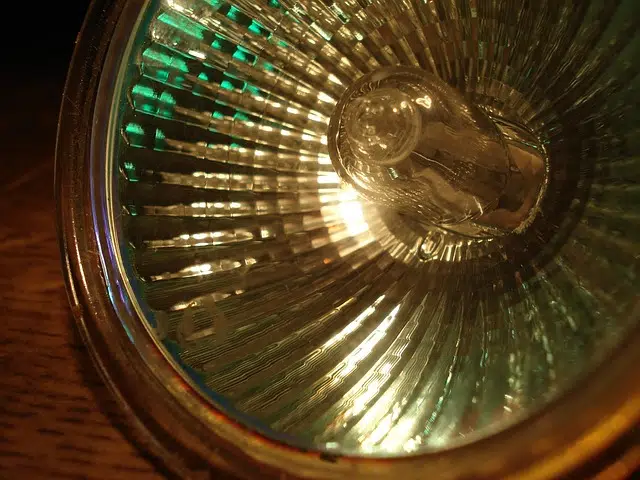
Lamps are usually made with halogens.
The term halogen is used to refer to each of the six chemical elements that are part of group 17 of the periodic table, and are the following: bromine , chlorine , iodine , fluorine , tenesum and astatine . These elements have certain chemical behaviors in common, such as forming sodium salts that are very similar to each other; For this reason, the etymology of their name can be translated as "salt producers."
Human beings have been taking advantage of the properties of halogens since ancient times, long before having the necessary technical knowledge to be able to distinguish them or carry out in-depth studies on them. Its main application was in the form of salts, which the Greeks and Phoenicians used to preserve food (what is known today as brine ).
Characteristics of halogens
Halogens show a tendency to form a halide ion : a compound that has a halogen atom and a functional group , cation, or element with lower electronegativity. Compounds that contain halogens are known as halogenated compounds .
With seven valence electrons in their outer shell, halogens must react with another element to comply with the octet rule . The high electronegativity of their atoms gives them high reactivity , a characteristic that means that they can be harmful to living beings in certain quantities.
Reactivity and valence
The fact that halogens are so reactive means that we cannot find them in their monatomic form; Instead, they are always part of other compounds. In some cases, they are found in a single- element diatomic molecular formation.
Another of their characteristics is that they are monovalent, meaning that these elements require the presence of an electron to reach their final energy level. For this reason, they are all oxidizers. Likewise, they have an electronegativity value equal to or less than 2.5 on the Pauling scale (the highest is fluorine). Tenesum and astatine are classified as radioactive elements with a short half-life. The first is also synthetic, and is the second heaviest element that has been created so far. Chlorine and fluorine, on the other hand, are the most abundant in nature.
It is important to note that the group to which halogens belong is very diverse, since it is possible to find it at normal pressure and temperature in the three states: fluorine and chlorine, in a gaseous state; bromine, in liquid state; astatine and iodine, in solid state. Regarding their color, halogens also cover a very wide range: iodine can be black or violet; bromine is brownish red; chlorine presents a yellowish green; fluorine is pale yellow. The astatus, for its part, does not live long enough to be noticed by sight.

Halogen lighting is characterized by its heat resistance and long lifespan.
Uses of halogens
Halogens have multiple uses. They are usually used to make halogen lamps , which are characterized by their bright, whitish light .
Halogen lamps, therefore, have some halogen element. They usually include bromine or iodine with an inert gas and a tungsten filament. Thanks to the thermal balance of the gas and filament, these lamps have a long lifespan, which allows them to resist heat and offer better performance compared to incandescent lamps.
Teflon is also produced with halogens, a polymer that stands out for its resistance to corrosion and heat . This material is similar to polyethylene, although the hydrogen atoms are replaced with fluorine atoms. Teflon is used in kitchen utensils and medicine, for example.
